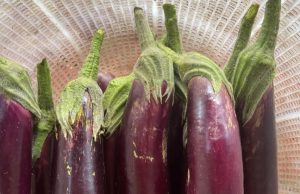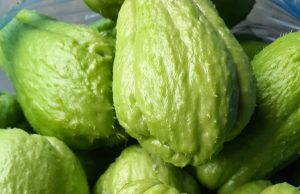
Although growing garlic in pots requires patience, it’s a really simple and mostly hands-off job. This method is particularly worthwhile if you don’t have any outside growing area at all or if you waited too long to plant garlic in your garden and the ground is frozen.
Fortunately, growing garlic in pots is a simple task for all varieties. No matter where you reside, you can have this edible bulb growing for you all year round since potted garlic can be grown both indoors and outdoors. You can grow your own garlicky delight by planting garlic in pots and following a few easy steps.
Types of Garlic
Garlic, a member of the genus Allium, is a relative of onions, leeks, and chives. Exceptionally tolerant of cold temperatures, garlic can be grown outdoors year-round in USDA Hardiness Zones 4-7. Outside of these areas, some extra precautions for cold and warm temperatures can be beneficial.
There are two kinds of garlic to choose from, softneck and hardneck, both sharing similar flavors. However, the choice between them may depend on your specific growing conditions. Softneck garlic, with its smaller but more abundant cloves in a single head, thrives in mild climates. In contrast, hardneck garlic tends to yield larger but fewer cloves per head and is better suited for colder climates. Hardneck garlic exhibits a unique flowering stem, known as a scape, emerging from the center of the head. Softneck garlic has a longer storage life of about a year, while hardneck garlic typically stores for approximately six months.
When to Plant Garlic in Pot
Whether you choose to grow hardneck or softneck, garlic should be planted in fall as temperatures begin to drop. Like other types of bulbs, garlic cloves will begin to put out roots well before their leaves emerge. By planting in fall, the cooler weather encourages garlic to begin producing roots without immediately sending up leaves, ensuring a jump start to spring growth.
How to Plant Garlic in Pots

Once you’ve determined the most suitable garlic variety for your needs, obtain bulbs, often referred to as seed garlic, from reliable garden centers or reputable plant vendors. It’s advisable to avoid using garlic from grocery stores since it might have been treated with growth inhibitors to inhibit sprouting. Subsequently, adhere to these five steps for planting garlic in pots.
- Begin by selecting an appropriate container. Garlic thrives with ample moisture, yet its shallow, grass-like root system means it doesn’t necessitate a substantial amount of soil. Opting for planter boxes or shallow containers is ideal for garlic cultivation. Personally, I favor plastic pots for garlic, as they retain moisture effectively compared to clay containers and are significantly lighter, facilitating easy mobility.
- Next, fill your container about half way with potting mix and then mix in a measured amount of organic fertilizer. Ensure even distribution of the fertilizer throughout the soil. Add more potting mix until it reaches approximately an inch below the container’s rim. Blend in a bit more fertilizer with the additional potting mix for thorough incorporation.
- Starting with a head of garlic, split all the cloves apart. Pay close attention to the size and firmness of each one. Larger, firm cloves should be kept for planting while overly small or soft cloves should be skipped. Remove the excess papery sheath surrounding the cloves if you like, but leave the main outer coat intact.
- Push each clove, pointed side up, into the prepared soil about twice the depth of the clove. Leave about three inches between planted cloves.
- Once all the cloves of garlic are planted, water the entire container well until the excess moisture drains out the bottom. It’s normal for the potting mix to settle and may even expose some of the cloves. If this happens, simply add more to cover.
Tips for Growing Garlic in Pots

Like various other bulbs, such as tulips, garlic requires a chilling period below 40℉ for about two months to foster proper development. In regions with particularly cold winters, it’s advisable to safeguard newly planted garlic cloves in outdoor pots. Shield the pot by covering it with a thick layer of straw or fallen leaves to prevent potential damage to the plants as they establish roots. This protective layer should be removed in spring. Alternatively, you can store the pot in an unheated space like a garage until spring. Regardless of the method chosen, ensure that your potted garlic receives sufficient moisture throughout the winter, refraining from watering if the potting mix is frozen.
When your potted garlic begins to grow leaves after the chilling period, place the container in full sun (at least 8 hours per day) and provide plenty of water. In hotter, drier climates, this might mean daily watering. Every other week, fertilize your plants with a general purpose fertilizer or an organic fertilizer specifically formulated for garlic, such as Keene Garlic’s mix.
Can You Grow Garlic Indoors?
It’s possible to grow garlic in pots indoors. However, without the use of supplemental lighting, indoor garlic is best grown for its edible leaves rather than for the bulbs. Simply place planted cloves in a south-facing window once the leaves push through the soil surface, and keep the pot well watered. Fertilizing indoor garlic is not necessary as the cloves will have enough stored nutrients to support the leaves. Cut garlic leaves as soon as they’ve reached a few inches in length. The cloves may send up a second flush of leaves for one more harvest.


















